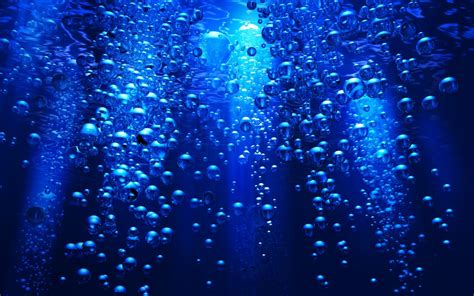Water, the elixir of life, covers over 70% of Earth’s surface and sustains every living organism. Yet, beneath its shimmering surface lies a fascinating process that keeps aquatic ecosystems thriving: the dissolution of oxygen. How does oxygen dissolve in water? This question unveils a captivating interplay of physics, chemistry, and nature’s ingenuity. From fish gliding through rivers to microscopic plankton drifting in oceans, the ability of oxygen to merge with water is a quiet miracle. Let’s dive into this phenomenon, exploring the science, the numbers, and the wonders of how oxygen water dissolve sustains life.
A Molecular Handshake: The Basics of Dissolution
At its core, the process of oxygen dissolving in water is a tale of molecules mingling. Oxygen, as we breathe it, exists as O₂—a stable, diatomic molecule floating freely in the atmosphere. Water, meanwhile, is H₂O, a polar molecule with a slight electrical charge imbalance, giving it a knack for interacting with other substances. When oxygen dissolve water, it’s not a chemical reaction but a physical one. The O₂ molecules slip between water molecules, held in place by weak forces rather than forming new compounds. This distinction is key: oxygen remains oxygen, simply taking up temporary residence in a liquid host.
The amount of oxygen water dissolve depends on several factors—temperature, pressure, and salinity, to name a few. At sea level, under standard atmospheric pressure (about 101.3 kPa), air contains roughly 21% oxygen. This oxygen exerts a partial pressure, pushing some of it into water. At 20°C, freshwater can hold about 9.1 milligrams of oxygen per liter—a figure known as its solubility. Compare that to the air we breathe, which has around 210 milligrams per liter of oxygen, and it’s clear water is a stingier host. Yet, this modest amount is enough to sustain aquatic life, from trout to tadpoles.
The Push of Pressure: Henry’s Law at Play
To understand how oxygen dissolves in water, we must meet Henry’s Law, a principle named after the English chemist William Henry in 1803. It states that the amount of gas dissolved in a liquid is proportional to the pressure of that gas above the liquid. Picture a soda can: the carbon dioxide stays dissolved under pressure, but pop the tab, and it fizzes out as the pressure drops. Similarly, oxygen water dissolve increases with higher atmospheric pressure. At higher altitudes, where air pressure dips, less oxygen dissolves—why mountain streams often have lower oxygen levels than lowland rivers.
Numbers paint a vivid picture here. At 25°C and standard pressure, freshwater dissolves about 8.3 mg/L of oxygen. Increase the pressure to twice the atmospheric norm (202.6 kPa), and that solubility doubles, nearing 16.6 mg/L. This relationship explains why deep-sea creatures thrive despite dim sunlight: higher pressures at depth force more oxygen into the water. It’s a natural engineering marvel, ensuring oxygen dissolve water even in the ocean’s abyss.
Temperature’s Tug: A Delicate Balance
If pressure pushes oxygen into water, temperature pulls it back out. Warm water holds less dissolved oxygen than cold water—a fact with profound ecological implications. At 0°C, freshwater can dissolve 14.6 mg/L of oxygen, but heat it to 30°C, and that drops to 7.6 mg/L. Why? Heat energizes water molecules, making them jostle more vigorously. This agitation leaves less room for oxygen molecules to settle in, like trying to sit still in a crowded, bouncing room.
This temperature effect is why summer heatwaves can spell trouble for fish. As water warms, oxygen levels plummet, stressing aquatic life. In a pond at 35°C, oxygen might dip below 7 mg/L—barely enough for sensitive species like salmon, which need 6-8 mg/L to thrive. Conversely, icy polar waters, rich with oxygen, support dense marine populations. The dance of water dissolve oxygen is thus a seasonal rhythm, shifting with the thermometer’s rise and fall.

Salinity’s Squeeze: Oceans vs. Rivers
Salt adds another twist to this tale. Seawater, with its 35 grams of salt per liter, dissolves less oxygen than freshwater. At 20°C, while freshwater holds 9.1 mg/L, seawater manages only 7.4 mg/L—a 19% drop. Salt ions crowd the water, competing with oxygen molecules for space and reducing solubility. This is why rivers teem with oxygen-hungry species, while ocean fish adapt to leaner supplies. The contrast highlights how oxygen dissolve water adjusts to its environment, a flexible guest in a varied host.
Yet, the ocean compensates with motion. Waves and currents churn the surface, mixing oxygen into deeper layers. A single stormy day can boost oxygen levels by 20-30% in shallow waters, a lifeline for coral reefs and kelp forests. Nature, it seems, has tricks to keep oxygen water dissolve flowing where it’s needed most.
Life’s Breath: Why It Matters
Why does this process captivate us? Because water dissolve oxygen is the breath of aquatic life. Fish gills extract dissolved O₂, converting it to energy just as our lungs do with air. A trout needs at least 5 mg/L to swim comfortably; drop below 3 mg/L, and it’s gasping. In oxygen-rich streams, biodiversity flourishes—mayflies, caddisflies, and minnows abound. But in stagnant, oxygen-poor ponds, only hardy carp or algae might survive.
Humans, too, rely on this phenomenon indirectly. Healthy rivers and oceans produce fish, regulate climate, and cycle nutrients—all tied to oxygen’s presence. Pollution, however, can disrupt this balance. Excess nutrients from fertilizers spark algal blooms, which consume oxygen as they decay, creating “dead zones.” The Gulf of Mexico’s dead zone, spanning 6,000 square miles in 2024, shows how fragile oxygen dissolve water can be when nature’s equilibrium falters.
Nature’s Stirring Spoon: Diffusion and Turbulence
How does oxygen get into water in the first place? Two processes lead the charge: diffusion and turbulence. Diffusion is the slow seep of oxygen from air to water at the surface, driven by concentration differences. If water has less oxygen than the air above, O₂ molecules drift in—about 0.3 grams per square meter per day in calm conditions. It’s a gentle handshake, molecule by molecule.
Turbulence, though, is the real mixer. Wind, waves, and waterfalls whip air into water, boosting oxygen levels fast. A rushing river might gain 10-15 mg/L of oxygen over a few meters of rapids. Even raindrops help, carrying tiny oxygen bubbles as they splash. This dynamic duo ensures oxygen water dissolve isn’t just a static process but a lively exchange, sculpted by nature’s forces.
A Universal Wonder: Beyond Earth
The story of oxygen dissolve water isn’t Earth-bound. Scientists probing Mars’ ancient riverbeds or Europa’s icy oceans look for dissolved oxygen as a sign of habitability. On Earth, it’s a process we take for granted—yet it’s a cosmic clue to life’s potential elsewhere. If alien seas hold oxygen, they might harbor life, echoing the same principles we see in our rivers and reefs.
The Quiet Symphony
So, how does oxygen dissolve in water? It’s a symphony of pressure, temperature, and motion—a delicate balance of forces letting O₂ slip into H₂O. From Henry’s Law to the churn of waves, from icy streams to salty seas, the process is both simple and profound. It’s the heartbeat of aquatic ecosystems, a testament to nature’s elegance. Next time you gaze at a lake or dip your toes in the sea, remember: beneath the surface, oxygen and water are dancing, sustaining life in every ripple.
Discover the power of BoostedOxygenWater, where science meets refreshment! Our wholesale oxygenated water enhances hydration and vitality, dissolving oxygen into every sip using nature’s finest principles—pressure, temperature, and purity. Perfect for health-conscious retailers, BoostedOxygenWater stands out with its proven solubility (up to 9.1 mg/L at 20°C) and crisp, clean taste. Elevate your product lineup and meet rising demand for wellness-focused beverages. Join top distributors capitalizing on this unique offering that blends innovation and nature. Ready to boost your sales? Schedule a call with our team today to explore exclusive wholesale opportunities with BoostedOxygenWater!
Reference:
1. Abdelrahman, H. and Boyd, C. (2018). Effects of mechanical aeration on evaporation rate and water temperature in aquaculture ponds. Aquaculture Research, 49(6), 2184-2192. https://doi.org/10.1111/are.13674
2. Boyd, C., Torrans, E., & Tucker, C. (2017). Dissolved oxygen and aeration in ictalurid catfish aquaculture. Journal of the World Aquaculture Society, 49(1), 7-70. https://doi.org/10.1111/jwas.12469
Edokpayi, J., Odiyo, J., Msagati, T., & Popoola, E. (2015). Removal efficiency of faecal indicator organisms, nutrients and heavy metals from a peri-urban wastewater treatment plant in thohoyandou, limpopo province, south africa. International Journal of Environmental Research and Public Health, 12(7), 7300-7320. https://doi.org/10.3390/ijerph120707300

